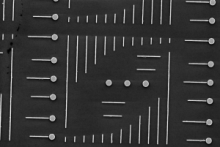Electrons in atoms are pretty talented. They can form chemical bonds, get kicked out of the atom and even “jump” to different locations based on their energetic states.
In 1961, atomic physicist Ugo Fano theorized that electrons harbor another and unexpected talent: They can interfere with themselves as they simultaneously take two different quantum-mechanical paths. On one path, they jump within the atom between discrete energy states. On the other path, they jump off the atom into the continuum of free space. Fano developed his theory after studying the electronic spectrum of helium gas excited by an electron beam. According to Fano’s theory, the electrons in the helium atoms were moving through two types of energy transitions, one discrete and the other continuous, which resulted in destructive interference through their synchronized mixing.
Though it has been almost 60 years since Fano published his theoretical explanation — now known as Fano interference — scientists have struggled to observe this effect at the nanoscale using an electron microscope. A team led by scientists from the University of Washington and the University of Notre Dame used recent advances in electron microscopy to observe Fano interferences directly in a pair of metallic nanoparticles, according to a paper published Oct. 21 in Physical Review Letters and highlighted by the journal’s editors.
Team uses golden ‘lollipop’ to observe elusive interference effect at the nanoscale
Submitted by Shane D DeBolt
on
